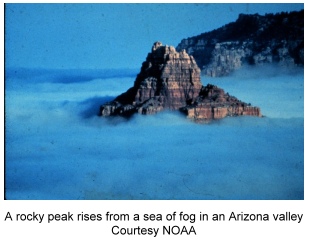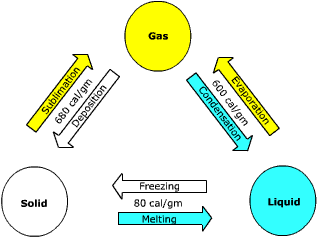7.8: Review and Additional Resources
- Page ID
- 16060
\( \newcommand{\vecs}[1]{\overset { \scriptstyle \rightharpoonup} {\mathbf{#1}} } \) \( \newcommand{\vecd}[1]{\overset{-\!-\!\rightharpoonup}{\vphantom{a}\smash {#1}}} \)\(\newcommand{\id}{\mathrm{id}}\) \( \newcommand{\Span}{\mathrm{span}}\) \( \newcommand{\kernel}{\mathrm{null}\,}\) \( \newcommand{\range}{\mathrm{range}\,}\) \( \newcommand{\RealPart}{\mathrm{Re}}\) \( \newcommand{\ImaginaryPart}{\mathrm{Im}}\) \( \newcommand{\Argument}{\mathrm{Arg}}\) \( \newcommand{\norm}[1]{\| #1 \|}\) \( \newcommand{\inner}[2]{\langle #1, #2 \rangle}\) \( \newcommand{\Span}{\mathrm{span}}\) \(\newcommand{\id}{\mathrm{id}}\) \( \newcommand{\Span}{\mathrm{span}}\) \( \newcommand{\kernel}{\mathrm{null}\,}\) \( \newcommand{\range}{\mathrm{range}\,}\) \( \newcommand{\RealPart}{\mathrm{Re}}\) \( \newcommand{\ImaginaryPart}{\mathrm{Im}}\) \( \newcommand{\Argument}{\mathrm{Arg}}\) \( \newcommand{\norm}[1]{\| #1 \|}\) \( \newcommand{\inner}[2]{\langle #1, #2 \rangle}\) \( \newcommand{\Span}{\mathrm{span}}\)\(\newcommand{\AA}{\unicode[.8,0]{x212B}}\)
Review

Review and assess your learning. Start with the "Important Terms and Concepts" to ensure you know the terminology related to the topic of the chapter and concepts discussed. Then, test your overall understanding by taking the "Self-assessment quiz".
-
- Phase change
-

Phase Changes of Water
-
- Evaporation
- the phase change of a liquid to a gas
-
- Transpiration
- the transfer of water into the air via leaf pores or stomata.
-
- Humidity
- a measure of the water vapor content of the air.
-
- Saturation
- "holding all the moisture it can"
-
- Specific humidity
- the weight of water vapor in the air per unit weight of air, which includes the weight of water vapor.
-
- Mixing ratio
- the weight of water vapor per unit weight of dry air.
-
- Vapor pressure
- the partial pressure created by water vapor.
-
- Saturation vapor pressure
- the pressure that water vapor creates when the air is fully saturated.
-
- Relative humidity
- the ratio of the amount of water vapor in the air to its saturation point.
-
- Condensation
- the phase change of water vapor into a liquid
-
- Condensation nuclei
- act as a platform for condensation to take place, increasing the size of a droplet and decreasing surface tension.
-
- Dew
- small droplets of water that form as a result of condensation.
-
- Fog
- a cloud that forms near the ground
-
- Radiation Fog
- forms during the evening under cloudless skies and with little to no wind
-
- Steam Fog
- occurs when cool dry air settles over a warm, moist surface
-
- Advection Fog
- forms when warm and moist air travels over a cool surface.
-
- Upslope Fog
- forms when moist air if forced up a slope
-
- Frontal Fog
- associated with weather fronts, especially a warm front.
-
- Saturated Adiabatic rate
- If the air is saturated, the rate of temperature change is .6oC/100 meters.
-
- Dry Adiabatic Rate
- If the air is dry, the rate of temperature change is 1oC/100 meters.
-
- Stable air
- Stable atmospheric conditions prevail when the environmental lapse rate is less than the saturated adiabatic rate.
-
- Unstable air
- Air is unstable when the environmental lapse rate is greater than the dry adiabatic rate.
-
- Cirrus cloud
- appear as wispy thin veils or detached filaments composed mostly of ice.
-
- Cirrostratus
- a transparent, whitish veil of cloud that usually covers much of the sky.
-
- Altostratus
- formless layer of grayish cloud that cover most if not all the sky.
-
- Stratus
- appear as a uniform dark-gray layer of clouds covering the entire sky.
-
- Cumulus
- appear as small, cotton ball-like clouds that generally form by convection.
-
- Nimbostratus
- dark-gray layer of clouds that cover the entire sky. The prefix "nimbo" indicates that these clouds are precipitating.
-
- Cumulonimbus
- form during very unstable conditions.
- The highest relative humidity for the day
- is usually around sunrise when the air temperature is coolest.
- is usually later in the afternoon when the air temperature is the warmest.
- is right at noon
- is at midnight
- If the temperature of the air increases without additional water vapor being added to the air the relative humidity will likely
- increase
- decrease
- stay the same
- temperature has no impact on relative humidity
- On a day in mid-June a parcel of air and the air that surrounds it at ground level are found to have the same temperature. You also find that the ELR is greater than the DAR on that day. If the parcel is given an upward push
- the air would be stable
- the air would be unstable
- the parcel and surrounding air will still have the same temperature
- none of the above
- A fog that forms when warm, moist air comes in contact with a cool surface is called
- a steam fog
- an upslope fog
- a radiation fog
- an advection fog
- The ice crystal growth model
- applies to cold clouds
- applies to mid and high latitude situations
- requires the presence of super-cooled water
- all the above
- The weight of water vapor per unit weight of dry air is
- the mixing ratio
- the relative humidity
- the absolute humidity
- the vapor pressure
- Thin, wispy high clouds composed of ice crystals are
- cumulus clouds
- cirrus clouds
- stratus clouds
- cumulonimbus clouds
- Latent heat
- is stored in water molecules when condensation occurs
- is converted to sensible heat when water vapor condenses
- is used to raise the temperature of the water
- relates to none of the above
- Radiation fog
- is more likely to form during the day
- is more likely to form at night
- forms when it is windy
- none of the above
- Frost is a product of
- evaporation
- condensation
- sublimation
- deposition
- Answer
-
- A
- B
- B
- D
- D
- A
- B
- B
- B
- D
Additional Resources
Use these resources to further explore the world of geography
A World of Change: El Niño, La Niña, and Rainfall (NASA Earth Observatory)


